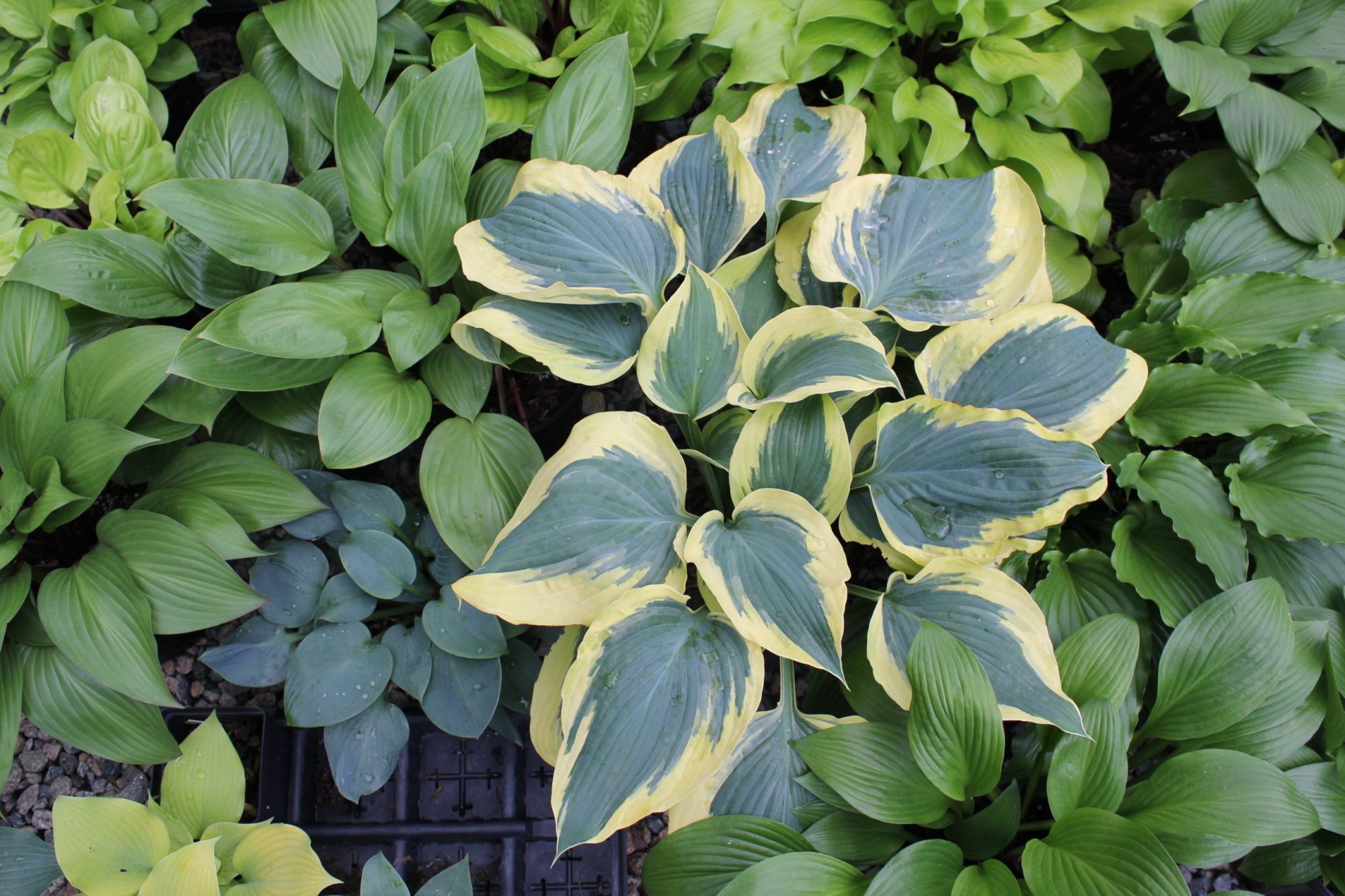Thoughts off the top of my head: November, 2007
I think most of us have enjoyed a wonderful extended Fall season this year. Despite the drought, the leaves have never been more colorful, including the hostas. Right up to Thanksgiving our hostas lingered, an entire garden of bright yellow leaves.
As school children and again in college, we learned that those beautiful Fall colors are hidden in the leaves all Summer, masked behind the green of chlorophyll. As the chlorophyll breaks and disappears down with the shortening days, the hidden colors appear in a blaze of glory.
All hostas are gold hostas it seems deep inside. The yellow fall color in hostas is probably the unmasking of xanthophyll pigments in the chloroplasts. This is true for the tree species that turn yellow also.
Recent research, to my surprise, has shown that the red colors we see in Fall leaves is actually produced by the plants in Autumn and are not present year-round. These pigments are anthocyanins, the same pigments that make hosta petioles “red” and hosta flowers purple.
Anthocyanins are not found in the chloroplasts of plants but are stored in the vacuoles of the cells. They are made as part of the photosynthesis and are carbon molecules that have a sugar or two attached. They may serve as a carbon sink, storing sugars.
Scientists are not sure why plants would produce sugars as they are going dormant, just to throw them away to the forest floor in a few weeks. They may serve as a sunscreen or visual warning to herbivores to stay away. In any case they bring a multitude of colors to life in the Eastern deciduous forest.
Hostas certainly do not produce large amounts of anthocyanins in the Fall, we see no red leafed hostas then. In Spring many hostas fill the vacuoles in certain cell layers in the petioles of the leaf with anthocyanins. We see the “red” best that time of year, when the plants are actively growing, and the temperatures are cool.
With the heat of summer, we see a shrinking of the visible area of “red” as the anthocyanins break down or are no longer produced by the lower photosynthetic rates of mature hosta leaves. We see no increase in color in Fall as temperatures again cool. probably because the leaves are already going dormant.
Interestingly, when the hostas leaves lose all their chlorophyll and become almost transparent yellow, we can see the purple clearly in the leaf petioles. Even after a hard freeze the purple is still visible in the wilted yellow leaves. All this is really pretty cool!
I was lucky to visit Minnesota the last week of October this year, expecting to find no leaves on the trees and no hostas anywhere to be found. I feared I might even have to navigate my rental car through miles of snow drifts. As I flew from Chicago to Minneapolis, I could see the sugar maples still had lots of leaves and lots of color. What a treat.
There were still hostas looking good enough to easily identify and I was amazed at how much like North Carolina the weather seemed. That would all change a couple of days after I left when the snow did begin to fly and I returned to a little frost on the pumpkin.
Besides the warm weather, I was amazed by the enthusiasm for hosta growing that was shared by the Northwest Wisconsin group and the two Minnesota clubs, the Minnesota Hosta Society and the Shades of Green Hosta Society. Hostas are really a special plant way up north.

